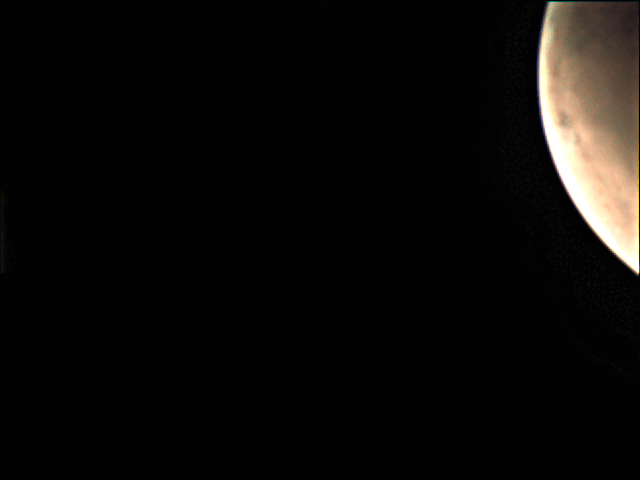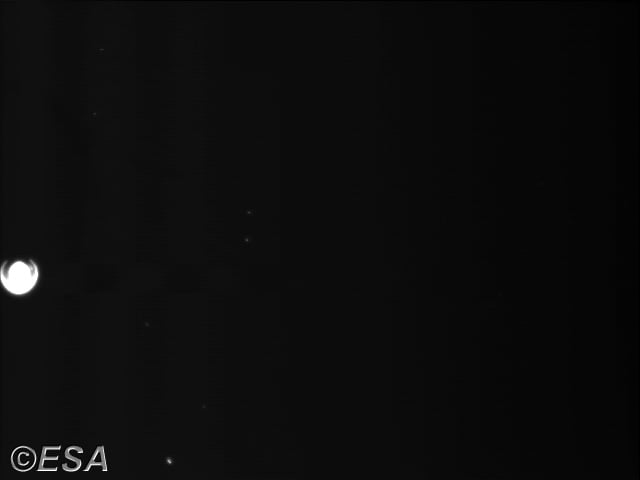When a mission to Mars reaches 20 years of service, that's definitely reason to celebrate. ESA's Mars Express celebrated by airing the first-ever livestream of images, sent directly from the Visual Monitoring Camera (VMC) on board the spacecraft. For an hour, it sent back images from the Red Planet in as close to real-time as the speed of light would allow.
The animated gif, above, was created from all the images that came down during that hour, roughly 50 seconds apart from each other. There's a short break in the middle of the animation because of an unexpected rainstorm at ESA's ground station in Cebreros, Spain, where telemetry wasn't able to be received.
The video from the livestream from Mars on June 2, 2023.The fact that this camera is still working after 20 years, plus that engineers figured out how to make the livestream happen is something to celebrate as well. The VMC was originally only supposed to be an engineering camera that only had one, short-lived job in December of 2003: monitoring the deployment of the Beagle 2 lander. The camera only got one shot of Beagle 2, and after it successfully deployed, the lander, unfortunately, crashed on the planet’s surface.
But VMC was an excellent camera and with such an asset on board, mission engineers turned it on again. They found that because of its unique location on the spacecraft, it could, for example, capture crescent images of Mars that are not obtainable from Earth. Plus, its wide field of view also provides global images of Mars - something that is not currently provided by any other spacecraft.
While this 'Mars Webcam' is not a scientific instrument, it does provide fantastic views of Mars.
ESA said that to get a one-hour live view of Mars, the VMC needed a view of the planet at the same time that Mars Express's antenna could continuously face Earth to immediately stream the data back. Normally, observations are stored onboard the spacecraft and downlinked to Earth in a batch once Mars Express gets visibility on a ground station.
"Usually, it's not possible to point the spacecraft's instruments at Mars and the communications antenna at the Earth at the same time," said James Godfrey, Spacecraft Operations Manager for Mars Express. "But some weeks ago, when we were looking for ideas on how to celebrate the anniversary, we realized that Mars would pass through the field of view of VMC during a communications pass and the idea was born."
In the animation, you may also notice that just before the point where the connection is lost and there's a break in images, a small white feature flashes up on Mars' edge. ESA explained that this is not actually on the planet but a 'stain' in part of the sensor that increases the amount of light that reaches pixels in this area. Usually, image processing removes such noise and stains but it's not always possible.
Visible on the animation is Mars' south polar cap, and the Arsia Mons volcano can be seen on the left side of the planet. The southern hemisphere is now approaching winter and Jorge Hernández Bernal, part of the VMC team said that clouds are common during this season, and form as the atmosphere flows up mountains and volcanic slopes.
To see more VMC images from the Mars Express, you can follow its Twitter feed for an archive of Mars images, but for new images find the Mars webcam on Flickr and Mastodon.
 Universe Today
Universe Today


